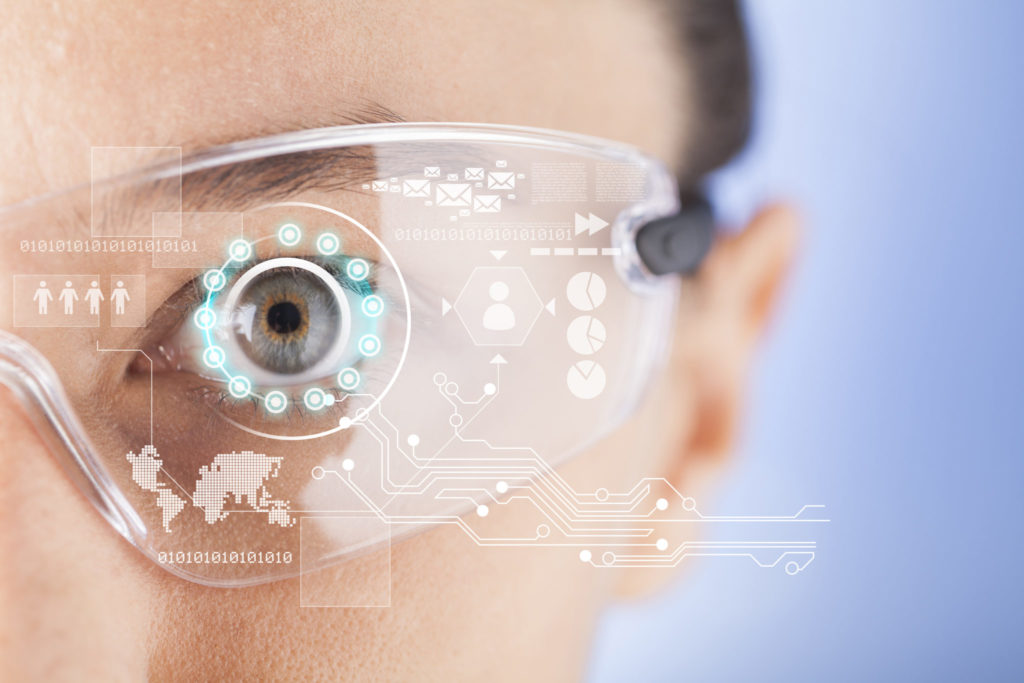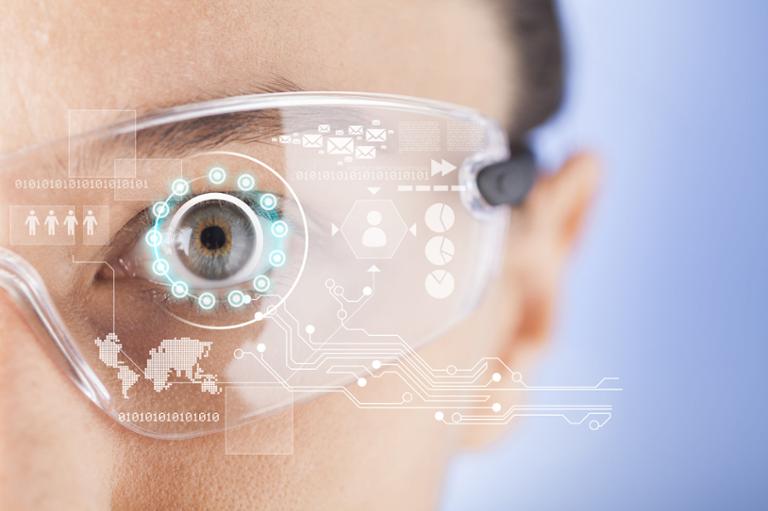 You’ve never worked with ‘rOS,’ but come 2020 you'll have the chance. According to a new report from Bloomberg, Apple is hard at work on launching augmented reality (AR) glasses alongside a new operating system. This dedicated AR OS, dubbed 'rOS' for “reality operating system,” is based on iOS. If Bloomberg's information is accurate, then rOS, when released, will join tvOS, watchOS, iOS, and macOS in Apple’s lineup. Previous reports have noted that a legion of Apple employees worked on what became ARKit, Apple's first developer toolkit for augmented reality; rOS builds on that technology. The latest news suggests the Apple AR team is now “several hundred” strong, and spread out amongst the company’s various Cupertino and Sunnyvale campuses. With rOS potentially set to launch in 2020, a new version of ARKit is said to make its debut in 2018 (we'd guess at WWDC, Apple's annual developer conference). Apple CEO Tim Cook previously said ‘no good AR headsets exist,’ which is why the rOS team is reportedly working with HTC Vive headsets in the interim. Remember that macOS High Sierra ushered in virtual reality (VR) headset and external GPU support, which could have been driven in part by the gestating rOS. The team is also reportedly working on custom-made Oculus-style headsets that are tantamount to deconstructed iPhones made into a headset. An Apple-branded headset is supposedly in development, along with a bespoke chipset for AR. Unlike the minuscule system-on-chip (SoC) we find in smartphones, Apple’s AR glasses may have a system-in-package (SiP) design. It’s bulky but energy-efficient, and allows for customization; you could have a very powerful GPS chip running alongside a less-robust processor, for instance. That sort of thing isn't always so simple with SoC architecture. If the report is accurate, we can expect a fairly bulky headset from Apple, at least at the outset. While it’ll undoubtedly be more svelte than an HTC Vive, it may require that Apple pack the SiP in one stem of the glasses, and the battery in the other. If we’re being speculative (and this is all rumor, so we are), the AirPods’ cylindrical stem batteries could come into play here, as well. A separate report from The Financial Times suggests that Apple is still trying to figure out the most “compelling application” for an AR headset. Groups within Apple are reportedly pushing for disparate hardware designs; one wants a 3D camera without screens, leaving the iPhone’s display as your main interface, while others want proper heads-up eyewear. Studies show AR has yet to make an impactful dent in the mobile app economy, and isn’t pushing the needle beyond obvious use-cases such as gaming – but that’s all phone-based AR. Once we have heads-up gear, the realm really opens up to enterprise, shopping and more.
You’ve never worked with ‘rOS,’ but come 2020 you'll have the chance. According to a new report from Bloomberg, Apple is hard at work on launching augmented reality (AR) glasses alongside a new operating system. This dedicated AR OS, dubbed 'rOS' for “reality operating system,” is based on iOS. If Bloomberg's information is accurate, then rOS, when released, will join tvOS, watchOS, iOS, and macOS in Apple’s lineup. Previous reports have noted that a legion of Apple employees worked on what became ARKit, Apple's first developer toolkit for augmented reality; rOS builds on that technology. The latest news suggests the Apple AR team is now “several hundred” strong, and spread out amongst the company’s various Cupertino and Sunnyvale campuses. With rOS potentially set to launch in 2020, a new version of ARKit is said to make its debut in 2018 (we'd guess at WWDC, Apple's annual developer conference). Apple CEO Tim Cook previously said ‘no good AR headsets exist,’ which is why the rOS team is reportedly working with HTC Vive headsets in the interim. Remember that macOS High Sierra ushered in virtual reality (VR) headset and external GPU support, which could have been driven in part by the gestating rOS. The team is also reportedly working on custom-made Oculus-style headsets that are tantamount to deconstructed iPhones made into a headset. An Apple-branded headset is supposedly in development, along with a bespoke chipset for AR. Unlike the minuscule system-on-chip (SoC) we find in smartphones, Apple’s AR glasses may have a system-in-package (SiP) design. It’s bulky but energy-efficient, and allows for customization; you could have a very powerful GPS chip running alongside a less-robust processor, for instance. That sort of thing isn't always so simple with SoC architecture. If the report is accurate, we can expect a fairly bulky headset from Apple, at least at the outset. While it’ll undoubtedly be more svelte than an HTC Vive, it may require that Apple pack the SiP in one stem of the glasses, and the battery in the other. If we’re being speculative (and this is all rumor, so we are), the AirPods’ cylindrical stem batteries could come into play here, as well. A separate report from The Financial Times suggests that Apple is still trying to figure out the most “compelling application” for an AR headset. Groups within Apple are reportedly pushing for disparate hardware designs; one wants a 3D camera without screens, leaving the iPhone’s display as your main interface, while others want proper heads-up eyewear. Studies show AR has yet to make an impactful dent in the mobile app economy, and isn’t pushing the needle beyond obvious use-cases such as gaming – but that’s all phone-based AR. Once we have heads-up gear, the realm really opens up to enterprise, shopping and more. New ARKit Arrives Next Year, 'rOS' in 2020: Report
 You’ve never worked with ‘rOS,’ but come 2020 you'll have the chance. According to a new report from Bloomberg, Apple is hard at work on launching augmented reality (AR) glasses alongside a new operating system. This dedicated AR OS, dubbed 'rOS' for “reality operating system,” is based on iOS. If Bloomberg's information is accurate, then rOS, when released, will join tvOS, watchOS, iOS, and macOS in Apple’s lineup. Previous reports have noted that a legion of Apple employees worked on what became ARKit, Apple's first developer toolkit for augmented reality; rOS builds on that technology. The latest news suggests the Apple AR team is now “several hundred” strong, and spread out amongst the company’s various Cupertino and Sunnyvale campuses. With rOS potentially set to launch in 2020, a new version of ARKit is said to make its debut in 2018 (we'd guess at WWDC, Apple's annual developer conference). Apple CEO Tim Cook previously said ‘no good AR headsets exist,’ which is why the rOS team is reportedly working with HTC Vive headsets in the interim. Remember that macOS High Sierra ushered in virtual reality (VR) headset and external GPU support, which could have been driven in part by the gestating rOS. The team is also reportedly working on custom-made Oculus-style headsets that are tantamount to deconstructed iPhones made into a headset. An Apple-branded headset is supposedly in development, along with a bespoke chipset for AR. Unlike the minuscule system-on-chip (SoC) we find in smartphones, Apple’s AR glasses may have a system-in-package (SiP) design. It’s bulky but energy-efficient, and allows for customization; you could have a very powerful GPS chip running alongside a less-robust processor, for instance. That sort of thing isn't always so simple with SoC architecture. If the report is accurate, we can expect a fairly bulky headset from Apple, at least at the outset. While it’ll undoubtedly be more svelte than an HTC Vive, it may require that Apple pack the SiP in one stem of the glasses, and the battery in the other. If we’re being speculative (and this is all rumor, so we are), the AirPods’ cylindrical stem batteries could come into play here, as well. A separate report from The Financial Times suggests that Apple is still trying to figure out the most “compelling application” for an AR headset. Groups within Apple are reportedly pushing for disparate hardware designs; one wants a 3D camera without screens, leaving the iPhone’s display as your main interface, while others want proper heads-up eyewear. Studies show AR has yet to make an impactful dent in the mobile app economy, and isn’t pushing the needle beyond obvious use-cases such as gaming – but that’s all phone-based AR. Once we have heads-up gear, the realm really opens up to enterprise, shopping and more.
You’ve never worked with ‘rOS,’ but come 2020 you'll have the chance. According to a new report from Bloomberg, Apple is hard at work on launching augmented reality (AR) glasses alongside a new operating system. This dedicated AR OS, dubbed 'rOS' for “reality operating system,” is based on iOS. If Bloomberg's information is accurate, then rOS, when released, will join tvOS, watchOS, iOS, and macOS in Apple’s lineup. Previous reports have noted that a legion of Apple employees worked on what became ARKit, Apple's first developer toolkit for augmented reality; rOS builds on that technology. The latest news suggests the Apple AR team is now “several hundred” strong, and spread out amongst the company’s various Cupertino and Sunnyvale campuses. With rOS potentially set to launch in 2020, a new version of ARKit is said to make its debut in 2018 (we'd guess at WWDC, Apple's annual developer conference). Apple CEO Tim Cook previously said ‘no good AR headsets exist,’ which is why the rOS team is reportedly working with HTC Vive headsets in the interim. Remember that macOS High Sierra ushered in virtual reality (VR) headset and external GPU support, which could have been driven in part by the gestating rOS. The team is also reportedly working on custom-made Oculus-style headsets that are tantamount to deconstructed iPhones made into a headset. An Apple-branded headset is supposedly in development, along with a bespoke chipset for AR. Unlike the minuscule system-on-chip (SoC) we find in smartphones, Apple’s AR glasses may have a system-in-package (SiP) design. It’s bulky but energy-efficient, and allows for customization; you could have a very powerful GPS chip running alongside a less-robust processor, for instance. That sort of thing isn't always so simple with SoC architecture. If the report is accurate, we can expect a fairly bulky headset from Apple, at least at the outset. While it’ll undoubtedly be more svelte than an HTC Vive, it may require that Apple pack the SiP in one stem of the glasses, and the battery in the other. If we’re being speculative (and this is all rumor, so we are), the AirPods’ cylindrical stem batteries could come into play here, as well. A separate report from The Financial Times suggests that Apple is still trying to figure out the most “compelling application” for an AR headset. Groups within Apple are reportedly pushing for disparate hardware designs; one wants a 3D camera without screens, leaving the iPhone’s display as your main interface, while others want proper heads-up eyewear. Studies show AR has yet to make an impactful dent in the mobile app economy, and isn’t pushing the needle beyond obvious use-cases such as gaming – but that’s all phone-based AR. Once we have heads-up gear, the realm really opens up to enterprise, shopping and more. 


